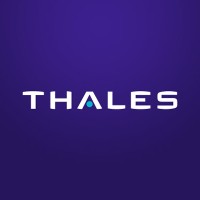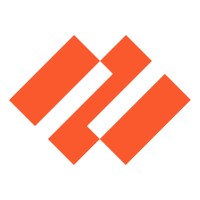
Google Cloud Security Company Cyber Security Posture
google.comWith comprehensive cybersecurity solutions, organizations can address their tough security challenges with many of the same capabilities Google uses to keep more people and organizations safe online than anyone else in the world. Experience Mandiant frontline intelligence and expertise, a modern, intel-driven security operations platform, a secure-by-design cloud foundation, and more — all supercharged by AI.
GCS Company Details
googlecloudsecurity
10,001+ employees
38051
none
Computer and Network Security
google.com
Scan still pending
GOO_3136728
In-progress
Between 200 and 800
This score is AI-generated and less favored by cyber insurers, who prefer the TPRM score.
 GCS Global Score
GCS Global Score.png)

Google Cloud Security Company Scoring based on AI Models
| Model Name | Date | Description | Current Score Difference | Score |
|---|---|---|---|---|
| AVERAGE-Industry | 03-12-2025 | This score represents the average cybersecurity rating of companies already scanned within the same industry. It provides a benchmark to compare an individual company's security posture against its industry peers. | N/A | Between 200 and 800 |
Google Cloud Security Company Cyber Security News & History
| Entity | Type | Severity | Impact | Seen | Url ID | Details | View |
|---|---|---|---|---|---|---|---|
| Google Cloud | Vulnerability | 25 | 1 | 5/2025 | GOO1046050625 | Link | |
Rankiteo Explanation : Attack without any consequencesDescription: In a comprehensive analysis of nearly five million internet-exposed assets, Google Cloud-hosted services showed 38% of assets with at least one security issue, more than double AWS’s 15% rate. Moreover, 5.35% of Google Cloud assets contained vulnerabilities deemed easy to exploit by attackers, driven by both misconfigurations and known software flaws. Although no widespread data theft or severe breaches have been reported to date, this high exposure rate leaves customer workloads susceptible to unauthorized access, potential data exposure, and service disruptions. Critical issues, while less common at 0.04%, combined with easily exploitable vulnerabilities could allow attackers to pivot through cloud environments, potentially undermining trust and disrupting business operations. Left unaddressed, these vulnerabilities may result in unexpected downtime, compliance violations, and reputational harm as security incidents attract media attention and scrutiny from regulatory bodies. The complexity of multi-cloud deployments further exacerbates the challenge, with overlooked assets and shadow IT creating additional attack surface. Security teams must prioritize continuous monitoring, automated patch management, and seedless discovery to identify and remediate misconfigurations and software flaws before they can be weaponized by adversaries. | |||||||
Google Cloud Security Company Subsidiaries

With comprehensive cybersecurity solutions, organizations can address their tough security challenges with many of the same capabilities Google uses to keep more people and organizations safe online than anyone else in the world. Experience Mandiant frontline intelligence and expertise, a modern, intel-driven security operations platform, a secure-by-design cloud foundation, and more — all supercharged by AI.
Access Data Using Our API

Get company history
.png)
GCS Cyber Security News
Cloud storage buckets leaking secret data despite security improvements
Researchers on Wednesday reported that many of AWS's and its competitors' cloud buckets contain sensitive data.
KPMG Joins Google Cloud's Security Partner Program to Strengthen Enterprise Cybersecurity
KPMG LLP today announced that the firm is joining the Google Cloud Security Partner Program to enhance cybersecurity solutions for Fortune ...
Best Google Cloud Security Tools For 2025
We've done our best to round up a full list of the best Google Cloud security tools in the market. These are the top ones for 2025 and make for great ...
Wiz to Join Google Cloud: Making Magic Together
Google Cloud builds some of the most scalable and secure products in the world, and together we want to utilize these cutting-edge technologies ...
What Google's Acquisition of Wiz Means for Cybersecurity
The acquisition will see Google Cloud and Wiz combine to accelerate security against rising multicloud and AI adoption.
The Google Cloud Cybersecurity Forecast 2025 Report
The Google Cloud Office of the CISO recently published its Cybersecurity Forecast 2025 report, providing expert insights into the trends that ...
KPMG's Cybersecurity Alliance with Google Cloud: A Game-Changer for Enterprise Risk Management?
The alliance leverages Google Cloud's Security Operations (SecOps) suite to deliver services like managed detection and response, compliance ...
Google Cloud: Top 5 Priorities for Cybersecurity Leaders Today
Cybersecurity teams must adapt their approaches in the wake of a dramatically changing threat landscape, according to expert speakers at the ...
Google pours billions into AI, cyber and infrastructure expansion
AI is the driving force behind massive capital investments by Google and its two larger hyperscale competitors, AWS and Microsoft. The ...

GCS Similar Companies

Thales Cyber Solutions
Drawing on a team of 6,000 experts and developers, Thales is a global leader in cybersecurity – no.1 in data security - with solutions deployed in 148 countries, generating annual revenues in excess of €2 billion in the domain. Thales supports its enterprise and government customers in the cybe

CrowdStrike
CrowdStrike (Nasdaq: CRWD), a global cybersecurity leader, has redefined modern security with the world’s most advanced cloud-native platform for protecting critical areas of enterprise risk — endpoints and cloud workloads, identity and data. Powered by the CrowdStrike Security Cloud and world-clas

Palo Alto Networks
Palo Alto Networks, the global cybersecurity leader, is shaping the cloud-centric future with technology that is transforming the way people and organizations operate. Our mission is to be the cybersecurity partner of choice, protecting our digital way of life. We help address the world's greatest s

Frequently Asked Questions
Explore insights on cybersecurity incidents, risk posture, and Rankiteo's assessments.
GCS CyberSecurity History Information
How many cyber incidents has GCS faced?
Total Incidents: According to Rankiteo, GCS has faced 1 incident in the past.
What types of cybersecurity incidents have occurred at GCS?
Incident Types: The types of cybersecurity incidents that have occurred incident Vulnerability.
How does GCS detect and respond to cybersecurity incidents?
Detection and Response: The company detects and responds to cybersecurity incidents through remediation measures with Continuous Monitoring, Automated Patch Management, Seedless Discovery.
Incident Details
Can you provide details on each incident?

Incident : Vulnerability Exploitation
Title: Cloud Security Issues in Google Cloud and AWS
Description: A comprehensive analysis of nearly five million internet-exposed assets revealed that 38% of Google Cloud-hosted services had at least one security issue, more than double AWS’s 15% rate. Additionally, 5.35% of Google Cloud assets contained vulnerabilities deemed easy to exploit by attackers, driven by both misconfigurations and known software flaws. Although no widespread data theft or severe breaches have been reported to date, this high exposure rate leaves customer workloads susceptible to unauthorized access, potential data exposure, and service disruptions. Critical issues, while less common at 0.04%, combined with easily exploitable vulnerabilities could allow attackers to pivot through cloud environments, potentially undermining trust and disrupting business operations. Left unaddressed, these vulnerabilities may result in unexpected downtime, compliance violations, and reputational harm as security incidents attract media attention and scrutiny from regulatory bodies. The complexity of multi-cloud deployments further exacerbates the challenge, with overlooked assets and shadow IT creating additional attack surface. Security teams must prioritize continuous monitoring, automated patch management, and seedless discovery to identify and remediate misconfigurations and software flaws before they can be weaponized by adversaries.
Type: Vulnerability Exploitation
Attack Vector: Misconfiguration, Known Software Flaws
Vulnerability Exploited: Easily Exploitable Vulnerabilities, Critical Issues
What are the most common types of attacks the company has faced?
Common Attack Types: The most common types of attacks the company has faced is Vulnerability.
Impact of the Incidents
What was the impact of each incident?

Incident : Vulnerability Exploitation GOO1046050625
Systems Affected: Google Cloud, AWS
Downtime: ['Unexpected Downtime']
Operational Impact: Service Disruptions, Business Operations Disruptions
Brand Reputation Impact: Reputational Harm
Legal Liabilities: ['Compliance Violations']
Which entities were affected by each incident?

Incident : Vulnerability Exploitation GOO1046050625
Entity Type: Cloud Service Provider
Industry: Technology

Incident : Vulnerability Exploitation GOO1046050625
Entity Type: Cloud Service Provider
Industry: Technology
Response to the Incidents
What measures were taken in response to each incident?

Incident : Vulnerability Exploitation GOO1046050625
Remediation Measures: Continuous Monitoring, Automated Patch Management, Seedless Discovery
Data Breach Information
What measures does the company take to prevent data exfiltration?
Prevention of Data Exfiltration: The company takes the following measures to prevent data exfiltration: Continuous Monitoring, Automated Patch Management, Seedless Discovery.
Lessons Learned and Recommendations
What lessons were learned from each incident?

Incident : Vulnerability Exploitation GOO1046050625
Lessons Learned: Security teams must prioritize continuous monitoring, automated patch management, and seedless discovery to identify and remediate misconfigurations and software flaws before they can be weaponized by adversaries.
What recommendations were made to prevent future incidents?

Incident : Vulnerability Exploitation GOO1046050625
Recommendations: Prioritize continuous monitoring, automated patch management, and seedless discovery to identify and remediate misconfigurations and software flaws before they can be weaponized by adversaries.
What are the key lessons learned from past incidents?
Key Lessons Learned: The key lessons learned from past incidents are Security teams must prioritize continuous monitoring, automated patch management, and seedless discovery to identify and remediate misconfigurations and software flaws before they can be weaponized by adversaries.
What recommendations has the company implemented to improve cybersecurity?
Implemented Recommendations: The company has implemented the following recommendations to improve cybersecurity: Prioritize continuous monitoring, automated patch management, and seedless discovery to identify and remediate misconfigurations and software flaws before they can be weaponized by adversaries..
Post-Incident Analysis
What were the root causes and corrective actions taken for each incident?

Incident : Vulnerability Exploitation GOO1046050625
Root Causes: Misconfigurations, Known Software Flaws
Corrective Actions: Continuous Monitoring, Automated Patch Management, Seedless Discovery
What corrective actions has the company taken based on post-incident analysis?
Corrective Actions Taken: The company has taken the following corrective actions based on post-incident analysis: Continuous Monitoring, Automated Patch Management, Seedless Discovery.
Additional Questions
Impact of the Incidents
What was the most significant system affected in an incident?
Most Significant System Affected: The most significant system affected in an incident were Google Cloud, AWS.
Lessons Learned and Recommendations
What was the most significant lesson learned from past incidents?
Most Significant Lesson Learned: The most significant lesson learned from past incidents was Security teams must prioritize continuous monitoring, automated patch management, and seedless discovery to identify and remediate misconfigurations and software flaws before they can be weaponized by adversaries.
What was the most significant recommendation implemented to improve cybersecurity?
Most Significant Recommendation Implemented: The most significant recommendation implemented to improve cybersecurity was Prioritize continuous monitoring, automated patch management, and seedless discovery to identify and remediate misconfigurations and software flaws before they can be weaponized by adversaries..
What Do We Measure?
















Every week, Rankiteo analyzes billions of signals to give organizations a sharper, faster view of emerging risks. With deeper, more actionable intelligence at their fingertips, security teams can outpace threat actors, respond instantly to Zero-Day attacks, and dramatically shrink their risk exposure window.
These are some of the factors we use to calculate the overall score:
Identify exposed access points, detect misconfigured SSL certificates, and uncover vulnerabilities across the network infrastructure.
Gain visibility into the software components used within an organization to detect vulnerabilities, manage risk, and ensure supply chain security.
Monitor and manage all IT assets and their configurations to ensure accurate, real-time visibility across the company's technology environment.
Leverage real-time insights on active threats, malware campaigns, and emerging vulnerabilities to proactively defend against evolving cyberattacks.




